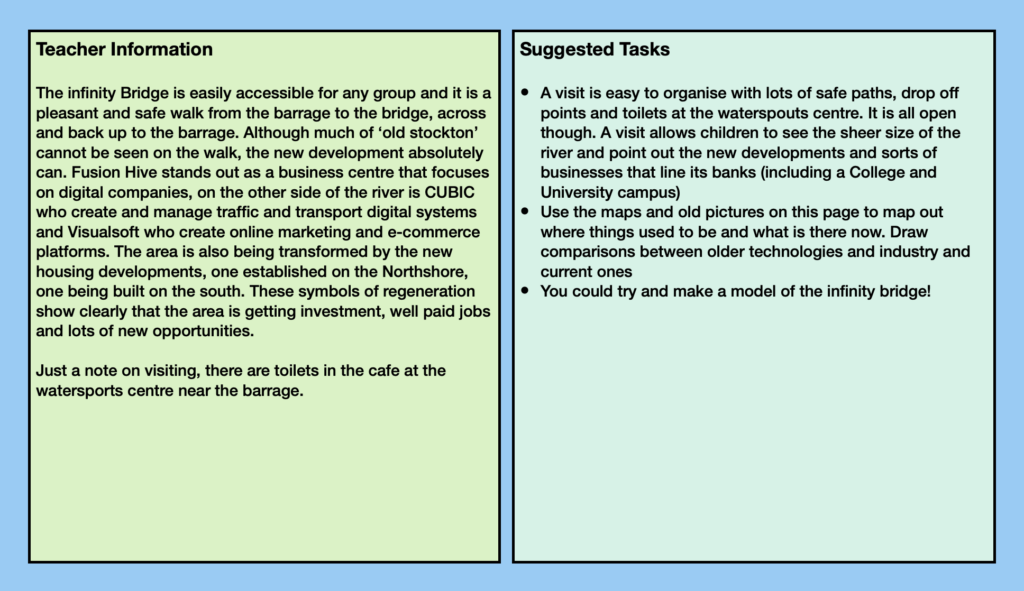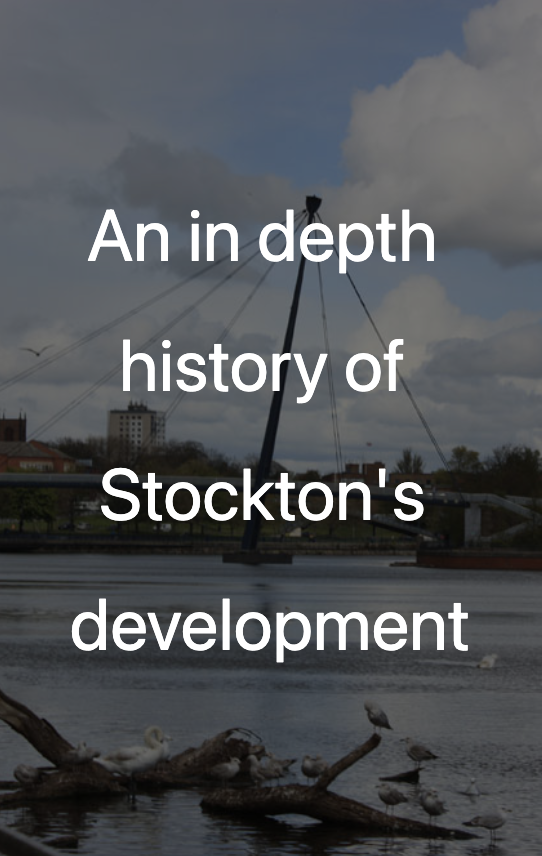INTRO
Industry in Stockton
Today the River Tees is a thriving port, one of the busiest in the UK handling huge bulk and container vessels. There are terminals and ports all along the first few miles of the river. However, the Newport Bridge roughly marks the end of the river where trade vessels would reach. Beyond that the river reaches to the Barrage where only smaller boats are able to pass. Beyond that….a footbridge, the Infinity Bridge, linking the Northshore with the College, University and business parks of Stockton. Visiting today shows an area of massive regeneration. There is a mix of business hubs such as the Fusion Hive and the new housing overlooking the river, soon on both sides. However, travel back to the prior between the 16th and 20th centuries and you would have seen a thriving port.
The huge feats of engineering that are the Mandale and Portrack cuts were undertaken to ensure that this part of the river was easily navigable for the port of Stockton. Coal, rope and goods from the south of County Durham and North Yorkshire often reached wider markets from Stockton. As the coal industry grew it became a major port for the Durham coal fields. Its importance was the main reason that the first railway was developed. Yes it carried passengers but more importantly it carried coal quickly. There are pictures and maps on this page that show what Stockton used to look like and if you look carefully at places names and streets, many reflect the town’s former maritime history.









